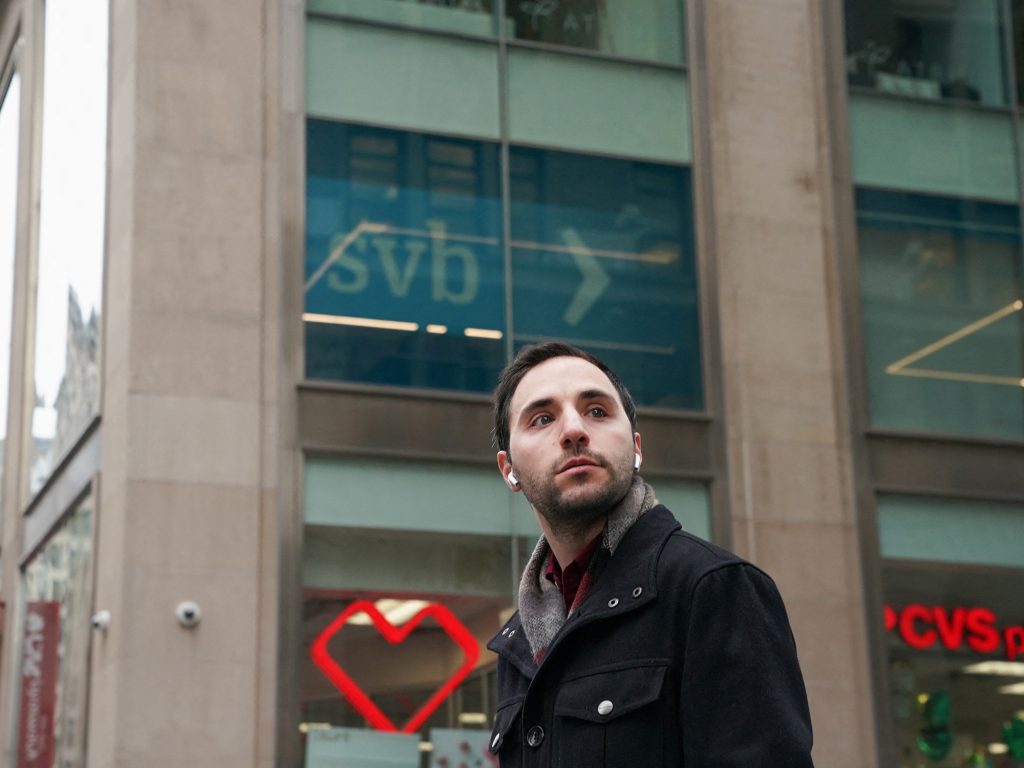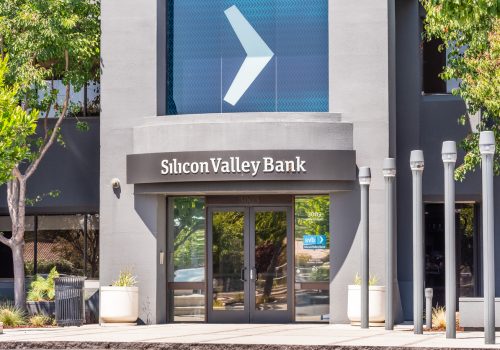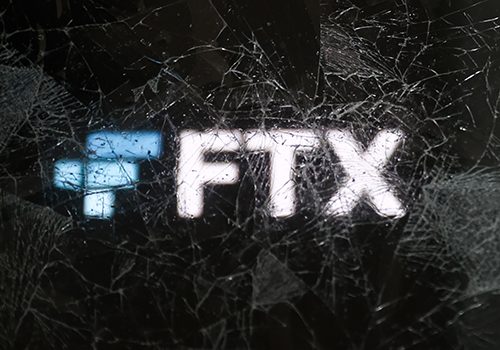Monetary policy is said to require about one to two years to have its maximum impact on inflation. Judging by that metric, the US economy may still have a few quarters to go before higher interest rates eventually put a damper on economic activity. The same cannot be said about the financial sector, however, which last week experienced the first large bank failure in over ten years. Almost exactly one year after Federal Reserve Chairman Jerome Powell announced the first rate hike in the current tightening cycle designed to fight inflation, the Federal Deposit Insurance Corporation (FDIC) placed Silicon Valley Bank (SVB) in receivership after a run on the bank’s assets had exposed a glaring hole in the bank’s balance sheet.
From what is known so far, the cause for SVB’s demise was a classic asset-liability duration mismatch. The bank held a large portfolio of long-term bonds that had lost in market value as interest rates increased over the past year. As word began to spread about its weak financial situation, it did not have enough short-term liquidity to meet customers’ demands for deposit withdrawals. The bank was then forced to sell its assets and realize its losses, which eventually led regulators to step in.
With the Fed’s tightening cycle still in full swing, it stands to reason that SVB—the sixteenth largest US bank with $209 billion in assets at the end of 2022—is not the only bank or financial institution to experience maturity mismatches of this kind. FDIC Chair Martin Gruenberg cautioned last week that the US financial system carries a $620 billion risk from value losses in bond portfolios. Much of this may be spread across smaller financial institutions, but it remains to be seen how other banks are able to cope with valuation losses on their balance sheets.
While SVB’s failure did not portend a systemic financial risk, given the specialized nature of its business, its troubles posed an existential threat to many start-up companies. These companies have held most of their deposits with the bank, and significant losses or an inability to access liquid funds could have jeopardized their ability to pay for ongoing operations. The concern was that widespread failures in the start-up sector could have had detrimental consequences for the pace of technological innovation and economic growth in future years. While Silicon Valley appeared to be hit hardest, SVB also owned branches or subsidiaries in countries around the world. Pressures duly emerged in Canada, the United Kingdom—where HSBC took over Silicon Valley Bank UK on Monday—and South Korea, for example.
Where does this leave policymakers at the current juncture?
- Immediate steps. US regulators, the Federal Reserve, and the US Treasury moved quickly over the weekend to protect depositors, restore access to SVB customers’ funds, and ensure that the SVB failure would not lead to a wider crisis of confidence in the financial sector. Unlike 2008, the bank’s failure stemmed from bond valuation losses, not failed loans. This leaves a considerable amounts of assets to cover losses while the balance sheet is being unwound, keeping overall rescue costs low. The FDIC had also invited bids from other banks to take over SVB’s business, but no buyer emerged over the weekend.
- Addressing systemic risk. The Federal Reserve also announced the creation of a new Bank Term Funding Program as a source of liquidity that could help financial institutions to avoid fire sales in times of stress, backed up by twenty-five billion dollars from the US Treasury’s Exchange Stabilization Fund. Financial markets recovered after the announcement but, in an echo of the 2008 global financial crisis, these actions could be politically contested. By extending deposit protection to banks’ commercial customers, regulators could be accused of encouraging additional risk-taking at public expense. Given the concentration of losses in the US technology sector, however, the intervention seemed justified. Regulators now need to hold managers accountable and ensure swift intervention and resolution of failed banks going forward.
- Bank regulation. Experts and former officials are asking why bank supervisors did not detect SVB’s problems at an earlier stage, allowing it to operate until a deposit run forced an intervention mid-week (similar to the recent case of Silvergate Capital, a smaller bank tied to the bankruptcy of crypto firm FTX). Best practice would have been to intervene over a weekend to avoid deposit runs, minimizing bank losses and effects on market confidence. While supervisors were quick to shut down Signature Bank, a smaller bank with ties to the crypto industry, over the weekend, they have been hampered by the fact that smaller banks became subject to less intense supervision with the 2018 revision of the Dodd-Frank Act. Whether legislative efforts are needed to tighten regulations will surely become a point of contention going forward.
- Crypto companies. In a twist highlighting the close relationship between the traditional financial and crypto universes, stablecoin issuer Circle* has also been affected by the closure of SVB, which held about three billion of its forty-two-billion-dollar asset base. Circle’s US dollar coin was trading as much as 15 percent below parity on Friday but recovered over the weekend after the company pledged to cover any shortfall in assets. The episode highlights the fragility of the business model behind stablecoins, even for a company that has a reputation of working closely with regulators. Circle’s quick response appears to have averted further damage even before it regained access to its deposits, but the onus is on the US Securities and Exchange Commission and other regulators to ensure that stablecoins are fully backed by liquid and high-quality assets.
The SVB episode is likely a harbinger of greater market volatility as the Federal Reserve continues to tighten monetary policy, even in the absence of a full-blown recession. While interest rate increases could slow down in the case of financial fragilities, the Fed is in a bind as long as inflation remains at current levels. The 2008 crisis has provided regulators with important lessons, but the end of a decade-long period of ultra-low interest rates clearly carries the potential for significant disruptions, including in the large nonbank financial sector. Economic agents have always been caught out by shifting monetary policy paradigms, and this time will be no different.
Risks are not limited to the United States, of course. Europe is undergoing its own tightening cycle, with the European Central Bank caught between stubborn inflation and some highly indebted euro area member countries. China is grappling with slow growth and a real estate crisis, emerging markets are under strain from a strong dollar, global trade restrictions are on the rise, and so are geopolitical tensions with China and Russia. Cryptocurrencies and cyber risks have introduced another element of uncertainty and possible contagion, as the SVB event has demonstrated. In this volatile environment, it may take less than a Lehman Brothers-sized shock to cause severe financial and economic disruption. Governments and central banks around the world better be prepared.
Martin Mühleisen is a nonresident senior fellow at the Atlantic Council’s GeoEconomics Center and a former International Monetary Fund chief of staff.
Note: Circle is a donor to the Atlantic Council.
Further reading
Mon, Mar 13, 2023
Silicon Valley Bank failed: What happens next?
EconoGraphics By Hung Tran
Even if the contagion effects are contained, risks to the financial stability of the US and the world have increased significantly. The Fed can no longer focus only on bringing down inflation, but must also avoid exacerbating financial stability risks.
Tue, Jan 3, 2023
Five trends to watch in 2023 as the global economy tries a dangerous reboot
New Atlanticist By Josh Lipsky
With each trend, policymakers can focus on a return to the status quo or build something different, and better, this year.
Thu, Nov 17, 2022
How to prevent the next FTX
New Atlanticist By JP Schnapper-Casteras
There are steps that policymakers and the industry can take now to build transparency and trust—thereby protecting consumers and avoiding a repeat of this disaster.
Image: A man stands near the sign with the Silicon Valley Bank (SVB) logo at Park Avenue location, in New York City, US, on March 10, 2023. Photo via REUTERS/David 'Dee' Delgado



